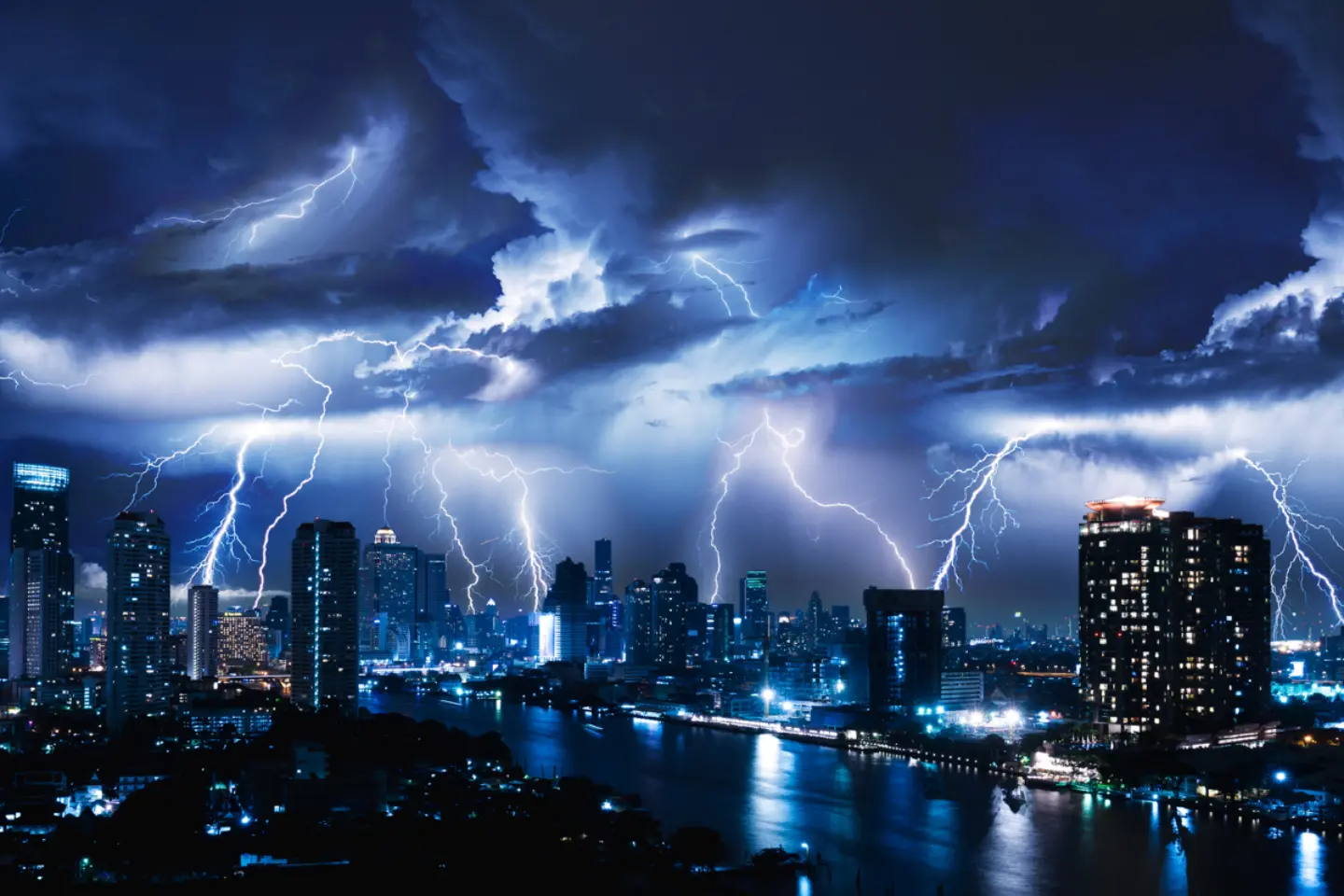When lightning rends the sky asunder, it is nothing short of awe-inspiring. However, this spectacular display of nature's raw power is also fraught with danger. Lightning storms can be unpredictable and lethal, with the capability to strike suddenly and with devastating force. To ensure your safety during such events, it is crucial to avoid some common yet critical mistakes.

Seeking shelter under a tree might seem a good idea during a rainstorm, but during a lightning storm, it can prove fatal. A solitary tree may seem to offer refuge, but it actually acts as a lightning rod. Lightning tends to strike the tallest object in the vicinity, which can often be a tree. If it hits, deadly ground current can spread out from the tree's base, leading to serious injuries or even fatalities to anyone nearby. Instead, seek shelter inside a substantial building or in a car with a hard top and the windows rolled up.
Another error to steer clear from is remaining on elevated areas such as hills, mountain ridges, or peaks. Lightning tends to strike higher ground, making these spots particularly perilous. If you find yourself caught in a lightning storm while on higher ground, make your way down as quickly and safely as possible, while avoiding cliffs and other steep drops.
There's also a common myth that wearing metal objects or carrying electronic devices can attract lightning. The truth is that lightning is not drawn to small metal objects, but these items can conduct electricity. Therefore, if you are outdoors during a lightning storm, best practice is to avoid any wired electronic devices and to remove metal jewellery to reduce the risk of being burned or electrocuted if lightning does strike nearby.
Perhaps one of the gravest missteps one can make is waiting too long to seek shelter. A lightning storm can move in rapidly, giving you less time to react than you might expect. Lightning can strike even if it is not raining and even if the thunderstorm is several miles away. Therefore, if you hear thunder, you are within striking distance of lightning. The 30-30 rule should always be followed: when you see lightning, count the time until you hear thunder. If that time is 30 seconds or less, the thunderstorm is close enough to be dangerous—seek shelter immediately and do not leave your safe spot until 30 minutes after the last thunder clap.
Another oversight is not taking note of your surroundings for potential hazards. For instance, avoid water during a lightning storm, as water is an excellent conductor of electricity. This includes avoiding swimming pools, beaches, lakes, and even bathtubs or sinks inside the home during a storm.
Moreover, while indoors, keep away from windows, doors, porches, and concrete. Lightning can shatter glass, and windows can burst from the pressure caused by the violent winds of a thunderstorm, turning loose glass into dangerous projectiles. Meanwhile, lightning can travel through metal wires or bars in concrete walls or flooring. Activities such as touching a concrete surface or leaning against a concrete wall during a lightning storm are not advisable.
Outdoor sports could be another potential mistake to avoid during lightning storms. Many lightning casualties happen to people who stay outdoors to finish a sports game or believe it is safe as long as it is not raining. It is imperative to cease outdoor sports activities and to move to a safe shelter at the first sign of a lightning threat.
Ignoring a lightning storm while driving can also be a major blunder. If you're in a vehicle when a thunderstorm strikes, it's essential to pull over and wait out the storm, particularly if it is accompanied by high winds and torrential rain which can limit visibility and create perilous driving conditions. In the event that you cannot pull over, it is advisable to slow down, turn on your headlights and keep a safe distance from the vehicle in front of you.
Finally, a vital rule that many overlook is the importance of first aid. Knowing basic first aid can be life-saving in the event that someone is struck by lightning. Victims do not retain an electrical charge and can be touched and treated immediately. Administer CPR if the person has stopped breathing or does not have a pulse. Be aware of the possibility of burns or other injuries related to lightning strikes, and be prepared to seek professional medical help as rapidly as possible.
In essence, staying safe during a lightning storm means understanding the risks and making swift, informed decisions. Heightened awareness of your environment and swift action in seeking appropriate shelter can mean the difference between life and death. As thunderstorms are a common occurrence in many parts of the world, knowing and adhering to the aforementioned safety precautions is essential. Remember, respecting the might of Mother Nature is not only a matter of admiration but can also be a practice in preservation.
